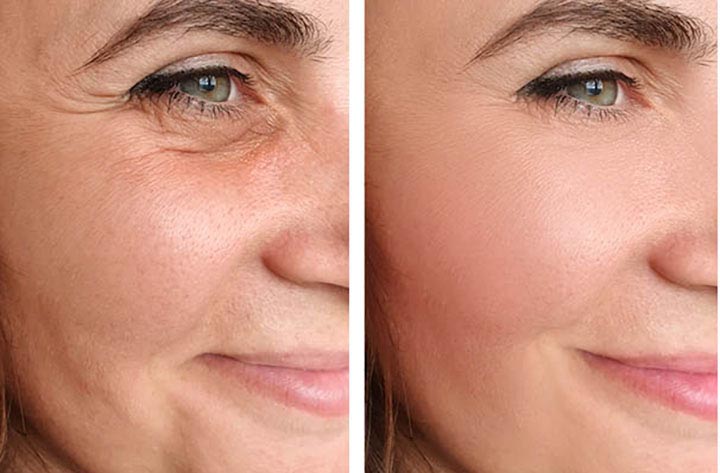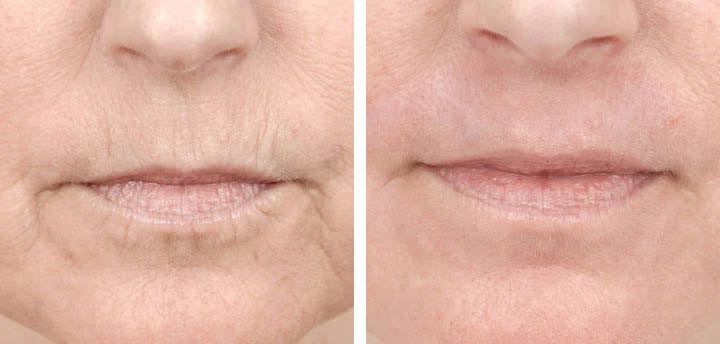A nonsurgical facelift uses noninvasive or minimally invasive techniques to improve the appearance of your facial skin. Treatments such as dermal fillers and fat injections add volume for a smoother, younger look.
Advertisement
Cleveland Clinic is a non-profit academic medical center. Advertising on our site helps support our mission. We do not endorse non-Cleveland Clinic products or services. Policy

A nonsurgical facelift is a procedure to temporarily refresh, firm or plump the skin on your face. It doesn’t require large incisions (cuts), general anesthesia or an overnight hospital stay. Nonsurgical facelifts typically use a combination of minimally invasive and nonsurgical techniques.
Advertisement
Cleveland Clinic is a non-profit academic medical center. Advertising on our site helps support our mission. We do not endorse non-Cleveland Clinic products or services. Policy
A surgical facelift (rhytidectomy) uses cuts in the face to tighten the skin on your face and neck. A surgical facelift may also transfer fat to your face or adjust facial muscles. For this type of procedure, you’ll need general anesthesia and overnight hospitalization.
Cosmetic surgery is a more dramatic, permanent treatment for aging facial skin. Nonsurgical treatments tend to deliver short-term results.
People who worry about aging skin or any of the following common facial skin concerns may consider a nonsurgical facelift:
Some people with pre-existing skin conditions might not be good candidates for a nonsurgical facelift. Talk to your healthcare provider before treatment if you have:
It’s also important to note that nonsurgical facelifts might not be effective for cosmetic concerns such as:
Advertisement
Nonsurgical facelifts can take many forms and address multiple skin concerns. Your healthcare provider can advise you about which procedures are right for you.
Nonsurgical facelifts are extremely common. In 2020, providers performed more than 13 million minimally invasive cosmetic procedures in the U.S. Most of those procedures — such as botulinum toxin, dermal fillers and laser skin resurfacing — were for the face.

Procedures vary depending on the type of nonsurgical facelift you receive. Most procedures take place right in the office. Some are relatively painless, while others may cause discomfort. Your provider can tell you more about what to expect for the following treatments:
The potential risks of a nonsurgical facelift procedure depend on the type you receive. Most nonsurgical facelift treatments are generally safe and have minimal side effects, but risks may include:
In rare cases, botulinum toxin injections and dermal fillers can lead to:
A nonsurgical facelift can help you achieve firmer, smoother and younger looking skin without surgery. You don’t need general anesthesia or overnight hospitalization. Recovery is faster and less painful than recovery after a surgical procedure. Nonsurgical facelifts also tend to be much less expensive than surgical cosmetic procedures.
Some people experience mild pain, soreness or discomfort after their treatment. You might notice your skin is red and a little swollen. After a few days, you may have bruising, flaking skin or scabs, depending on the procedure you choose. Most people can return to normal activities right away or shortly after their procedure.
As you recover, your provider may recommend:
Advertisement
The results of treatment vary. You may need to repeat some procedures, such as chemical peels or botulinum toxin injections, every few months. The results of other treatments may last longer.
Talk to your healthcare provider about the best way to maintain the results of your procedure. Regular treatments can help you achieve longer-lasting skin benefits. You can also maintain a healthy skin care routine by:
Contact your healthcare provider if you experience these symptoms after your procedure:
A nonsurgical facelift is a noninvasive or minimally invasive treatment to improve the look of your facial skin. Procedures add volume to your face and reduce the look of wrinkles and sagging skin. These treatments produce temporary results, so talk to your healthcare provider about the number and frequency of treatments necessary to achieve your goals.
Advertisement
Every day, people see your skin, hair and nails. At Cleveland Clinic, our expert and caring dermatology team will make sure they’re healthy and strong.

Last reviewed on 08/18/2022.
Learn more about the Health Library and our editorial process.